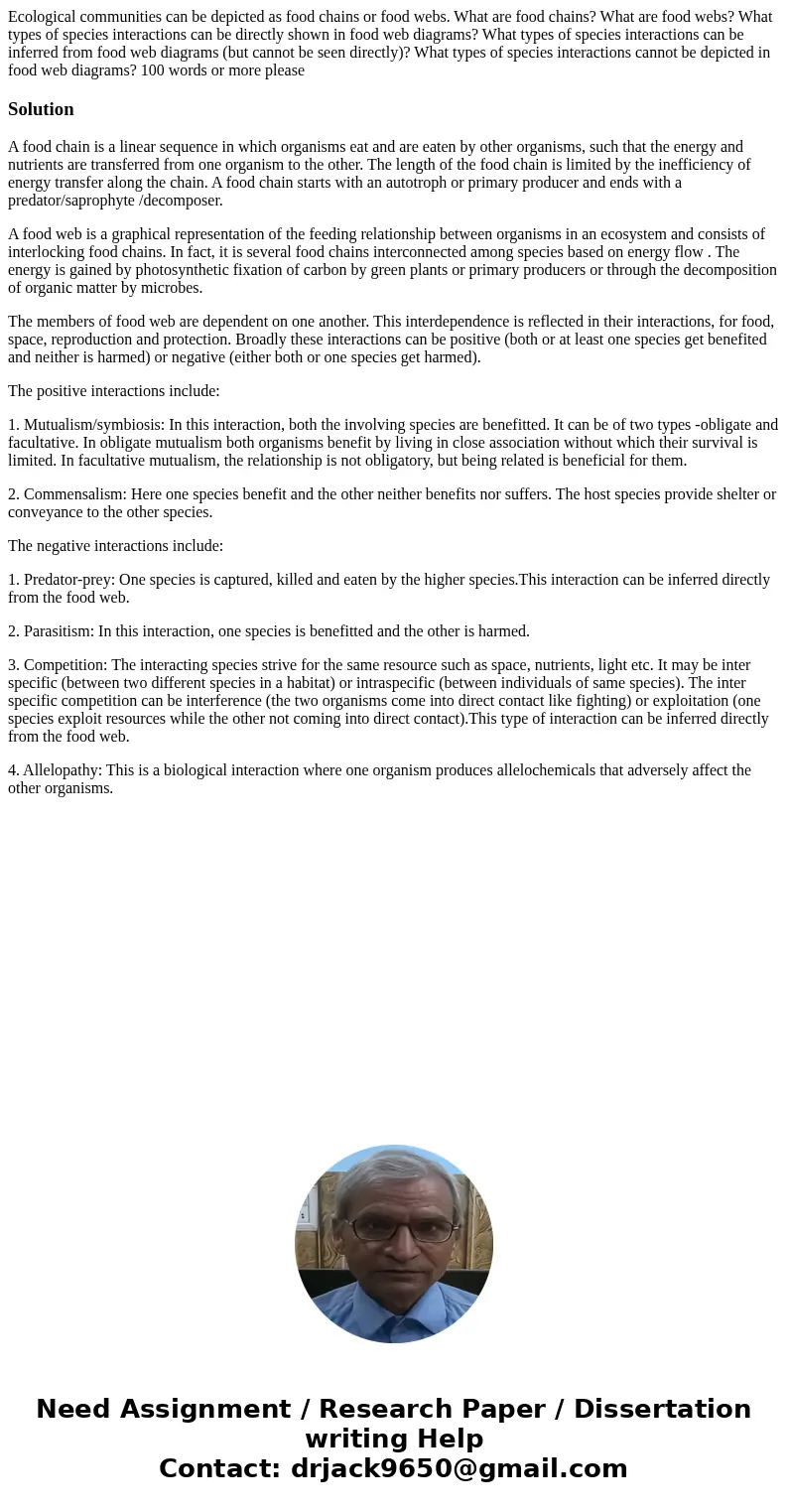Ecological communities can be depicted as food chains or foo
Ecological communities can be depicted as food chains or food webs. What are food chains? What are food webs? What types of species interactions can be directly shown in food web diagrams? What types of species interactions can be inferred from food web diagrams (but cannot be seen directly)? What types of species interactions cannot be depicted in food web diagrams? 100 words or more please
Solution
A food chain is a linear sequence in which organisms eat and are eaten by other organisms, such that the energy and nutrients are transferred from one organism to the other. The length of the food chain is limited by the inefficiency of energy transfer along the chain. A food chain starts with an autotroph or primary producer and ends with a predator/saprophyte /decomposer.
A food web is a graphical representation of the feeding relationship between organisms in an ecosystem and consists of interlocking food chains. In fact, it is several food chains interconnected among species based on energy flow . The energy is gained by photosynthetic fixation of carbon by green plants or primary producers or through the decomposition of organic matter by microbes.
The members of food web are dependent on one another. This interdependence is reflected in their interactions, for food, space, reproduction and protection. Broadly these interactions can be positive (both or at least one species get benefited and neither is harmed) or negative (either both or one species get harmed).
The positive interactions include:
1. Mutualism/symbiosis: In this interaction, both the involving species are benefitted. It can be of two types -obligate and facultative. In obligate mutualism both organisms benefit by living in close association without which their survival is limited. In facultative mutualism, the relationship is not obligatory, but being related is beneficial for them.
2. Commensalism: Here one species benefit and the other neither benefits nor suffers. The host species provide shelter or conveyance to the other species.
The negative interactions include:
1. Predator-prey: One species is captured, killed and eaten by the higher species.This interaction can be inferred directly from the food web.
2. Parasitism: In this interaction, one species is benefitted and the other is harmed.
3. Competition: The interacting species strive for the same resource such as space, nutrients, light etc. It may be inter specific (between two different species in a habitat) or intraspecific (between individuals of same species). The inter specific competition can be interference (the two organisms come into direct contact like fighting) or exploitation (one species exploit resources while the other not coming into direct contact).This type of interaction can be inferred directly from the food web.
4. Allelopathy: This is a biological interaction where one organism produces allelochemicals that adversely affect the other organisms.

 Homework Sourse
Homework Sourse